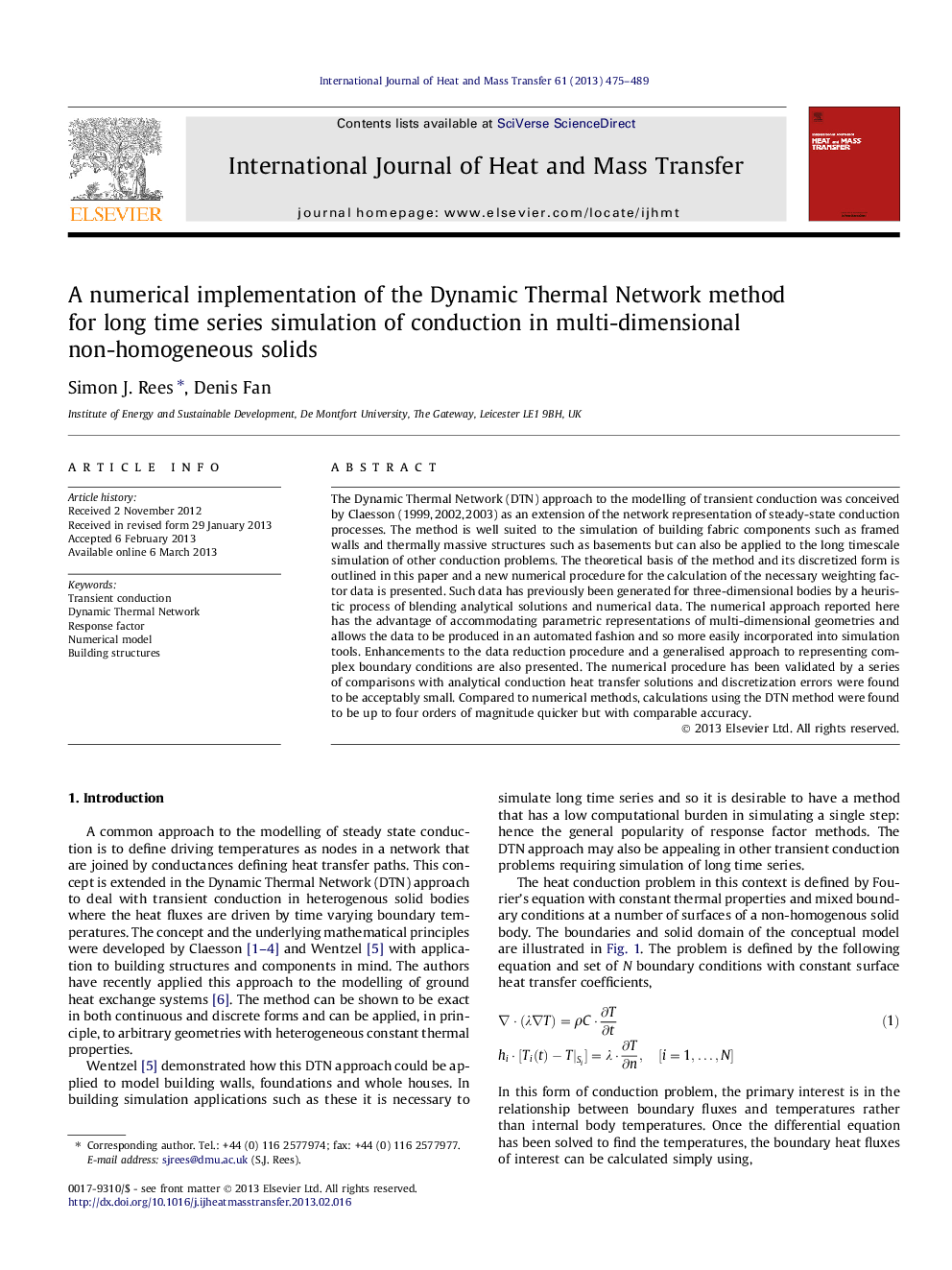| Article ID | Journal | Published Year | Pages | File Type |
|---|---|---|---|---|
| 7058936 | International Journal of Heat and Mass Transfer | 2013 | 15 Pages |
Abstract
The Dynamic Thermal Network (DTN) approach to the modelling of transient conduction was conceived by Claesson (1999, 2002, 2003) as an extension of the network representation of steady-state conduction processes. The method is well suited to the simulation of building fabric components such as framed walls and thermally massive structures such as basements but can also be applied to the long timescale simulation of other conduction problems. The theoretical basis of the method and its discretized form is outlined in this paper and a new numerical procedure for the calculation of the necessary weighting factor data is presented. Such data has previously been generated for three-dimensional bodies by a heuristic process of blending analytical solutions and numerical data. The numerical approach reported here has the advantage of accommodating parametric representations of multi-dimensional geometries and allows the data to be produced in an automated fashion and so more easily incorporated into simulation tools. Enhancements to the data reduction procedure and a generalised approach to representing complex boundary conditions are also presented. The numerical procedure has been validated by a series of comparisons with analytical conduction heat transfer solutions and discretization errors were found to be acceptably small. Compared to numerical methods, calculations using the DTN method were found to be up to four orders of magnitude quicker but with comparable accuracy.
Related Topics
Physical Sciences and Engineering
Chemical Engineering
Fluid Flow and Transfer Processes
Authors
Simon J. Rees, Denis Fan,
